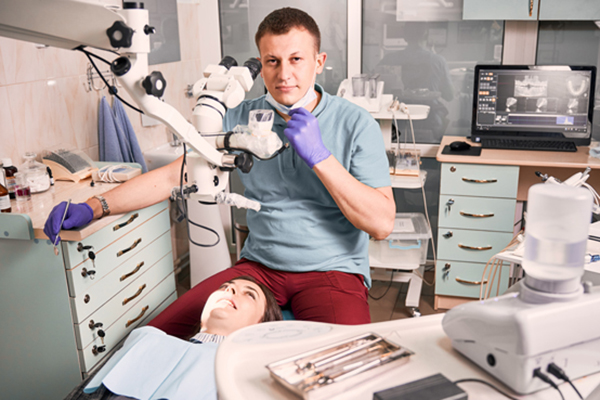 Invisalign® for teens can offer adolescents a more comfortable and more discreet option for straightening their teeth. For years, braces were one of the only options for effectively treating a crooked smile. Even though Invisalign® has been providing an alternative for decades, some people may not be familiar with who it is for and how it works.
Invisalign® for teens can offer adolescents a more comfortable and more discreet option for straightening their teeth. For years, braces were one of the only options for effectively treating a crooked smile. Even though Invisalign® has been providing an alternative for decades, some people may not be familiar with who it is for and how it works.
Common myths about Invisalign® treatment
Understanding the facts about using clear aligner trays can help patients determine which approach is right for their unique needs. Talk with a dentist about any questions you have so you can develop a proper treatment plan.
Myth: Only adults can use Invisalign®
Originally, when Invisalign® was first developed, it was only offered to adults who wanted straighter teeth without braces. However, advances in technology, products, and design have allowed this company to expand its patient range, including options for teenagers and even children with alignment issues. In fact, Invisalign® for teens has continued to increase in popularity over the past few years.
Myth: Invisalign® treatment is faster than using regular braces
How long your treatment lasts depends on a variety of factors:
- Age
- Overall oral health
- The extent of alignment issues
- Compliance with wearing the trays
- Ability to maintain regular appointments
In some cases, Invisalign® treatment may be faster than wearing braces. In others, it will take roughly the same amount of time. Patients who do not wear the trays for long enough periods may find their treatment takes longer than it would with braces. Only a dentist can give you an accurate time window for the expected duration.
While the overall time may not differ much, many patients find that when choosing Invisalign® for teens, they notice visible results much faster. This can be a confidence booster for many people and helps encourage continued proper use and care.
Myth: Invisalign® for teens is only effective for minor tooth alignment issues
While clear aligner trays can effectively address minor gaps or slightly crooked teeth, they can also treat more serious issues, including overbites and underbites, crossbites, larger gaps, and even open bites. However, you need to have a professional evaluation with a dentist to determine whether Invisalign® for teens can improve your unique smile. Some more serious cases may require braces or at least some type of dental work before treatment.
Myth: Invisalign® trays only have to be worn at night
Although clear aligner trays are completely removable, they should still be worn most of the time. Dentists recommend wearing them for a minimum of 22 hours every single day with no exceptions. For most people, this leaves just enough time to remove them for eating and toothbrushing and not much else. Retainers, which will be issued after treatment is complete, may need to be worn for longer periods at first, but they can eventually be worn only at night.
Conclusion
If you have assumptions about whether or not Invisalign® for teens can work for you or your child, talk with your dentist today. You may be surprised to find that it is a good option for straightening your smile.
Request an appointment or call The Smile Spa at 818-573-2196 for an appointment in our Agoura Hills office.
Recent Posts
A significant advantage of Invisalign® for teens is that it makes the treatment more discreet and less conspicuous than traditional braces. Nevertheless, you may be worried that the treatment will affect your speech. While this is possible, it is usually temporary, and there are things you can do to lessen the effects.The clear aligners used…
If your son or daughter is concerned about crooked teeth or a bad bite, you may want to consider Invisalign® for teens. This is an alternative to metal or ceramic braces, and it has numerous benefits, especially for those who are self-conscious about how they look. There are various reasons why Invisalign may be the…
A teenage boy or girl who deals with a crooked smile or uneven bite could be able to use Invisalign® for teens as a corrective treatment. The adolescent and high schools years are often filled with social pressure and a desire for acceptance, and any problems or concerns with a teen’s smile could create self-confidence…


